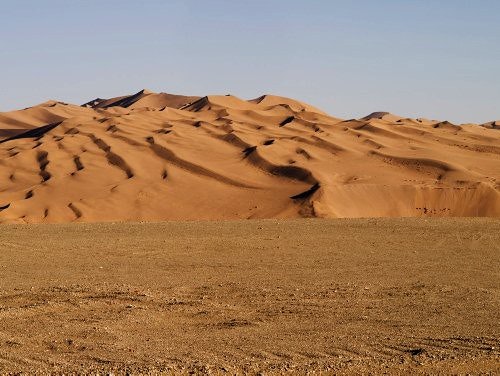
Editor’s note: News about conservation and the environment is made every day, but some of flies under the radar. In a recurring feature, Conservation News brings you one important story from the past week that you don’t want to miss.
In 2013, a team of scientists traveled deep into the Gobi Desert in northern China — where temperatures regularly surpass 38 degrees Celsius (100 degrees Fahrenheit) during the day and drop below -20 degrees Celsius (-4 degrees Fahrenheit) at night.
In this barren landscape, they made a shocking discovery: a new species of Streptomyces bacteria, which thrives in extreme temperatures that would scorch or freeze most species into oblivion. The researchers recently sequenced the bacterium’s genome to find out how it survives in such severe conditions — and found a unique gene that could help create stronger antibiotics for humans, reported Mikaela Conley for Wired.
Streptomyces includes more than 500 species of bacteria, many of which are used to develop clinical antibiotics such as those that treat tuberculosis and endocarditis.
The newly discovered gene in this unique species of Streptomyces helps trigger “the molecular switches that control antibiotic production much more efficiently than in conventional antibiotic-producing bacteria,” Conley wrote. According to the scientists’ recent study, inserting this gene into bacteria that are typically used to develop certain antibiotics doubles the speed of production, creating stronger antibiotics in a fraction of the time it normally takes.
The bacterium found in the Gobi Desert is considered an “extremophile” — a type of species adapted to extreme conditions, such as temperatures, pH levels and pressures that would likely kill other species. Another example of extremophiles are deep-sea black corals, many of which harbor compounds that could help humanity find clues to fight cancer and other diseases.
“The idea is that the more extreme the conditions, the more the organisms that exist are going to be forced to evolve and adapt,” Paul Dyson, a molecular microbiologist, told Wired.
While scientists are just learning about the desert bacterium, nature’s medicinal properties are not a new concept: Indigenous and local peoples around the world have used medicines derived from nature for centuries. And many modern-day medicines — including aspirin, penicillin, morphine and several chemotherapeutics — were derived from plants and fungi. In fact, roughly 70 percent of all drugs introduced in the United States in the past 25 years have come from nature.
However, widespread biodiversity loss and deforestation could threaten reserves of medicine in the wild — including remedies that have yet to be discovered.
“When we protect tropical forests, we also maintain ‘nature’s medicine cabinet’ — in other words, the wildlife and plants that could offer clues to solving illnesses such as cancer and cystic fibrosis,” Dr. Neil Vora, a practicing physician and Conservation International’s pandemic prevention fellow, told Conservation News.
If you’d like to read the original source of this article please click here Visit Source
